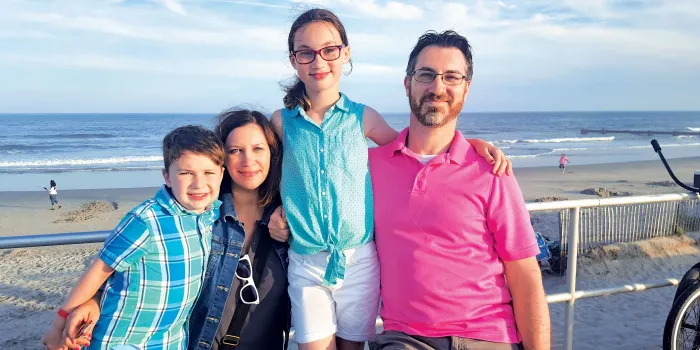For parents of a child with a bleeding disorder, life can seem pretty overwhelming at times. To ease stress, worry and isolation, it’s helpful for families to build a solid support team—one they can rely on for everything from medical assistance to baby-sitting. This network can be comprised of several groups:
Your Hemophilia Treatment Center
Issues are bound to arise that leave you confused. At times like these, your hemophilia treatment center (HTC) is there for you to lean on. For Dan Levy, of Voorhees, New Jersey, whose 7-year-old son, Max, has hemophilia A, one such recent incident was when Max was about to lose his first tooth. The Levys were concerned about Max having a mouth bleed when the tooth finally fell out. “We knew it was coming, so we talked with our HTC about a plan, and they were able to get us an updated prescription of Amicar,” he says. Levy says being able to work with the HTC to come up with a plan in advance made the whole situation less stressful.
Family and friends
The people closest to you are likely to be your most ardent supporters. However, adjusting to a new diagnosis can be hard. “A lot of times family members are well-meaning, but if they’ve never had to live with a bleeding disorder, sometimes they don’t completely understand what you’re going through,” says Lucy Ramirez, MSW, LCSW, a social worker at Rush Hemophilia and Thrombophilia Center in Chicago.
Max Levy spends a few days a week after school with his grandparents, and “there has been a learning curve,” says his father. “Early on, when everyone was still trying to figure out how to handle Max, some of the warning signs had to be learned. It’s harder for people who don’t see him every day.” But today, while his grandparents may not be experts at diagnosing a bleed, they know what to do if they have a concern.
Chapters and national gatherings
National Hemophilia Foundation (NHF) chapters across the country offer families a range of opportunities to connect with other families. This is especially helpful for parents and kids who are new to bleeding disorders, says Ramirez. “We encourage involvement in the local NHF chapter,” she says of the HTC at Rush. “It’s really overwhelming when a family first learns about the diagnosis, so during their first few comprehensive clinic visits, we try to introduce them to another family or another patient who’s involved in the bleeding disorders community. It makes it less scary and less stressful.”
Social media
Both Levy and Ramirez say there are risks and benefits to seeking social support online. “One of the risks of going online is that the people who tend to post their stories on certain sites are only going to tell you about the worst-case scenario or a bad experience they had with their medical center or their doctor,” says Ramirez. She suggests looking to chapter websites for reliable online support groups.
Levy cites Instagram as his social media support tool of choice. “It’s amazing to see, and then to be able to share our experiences with other people in the community,” he says. “That has been awesome because it makes me feel like I’m part of something even when I’m not at one of the national events.”

